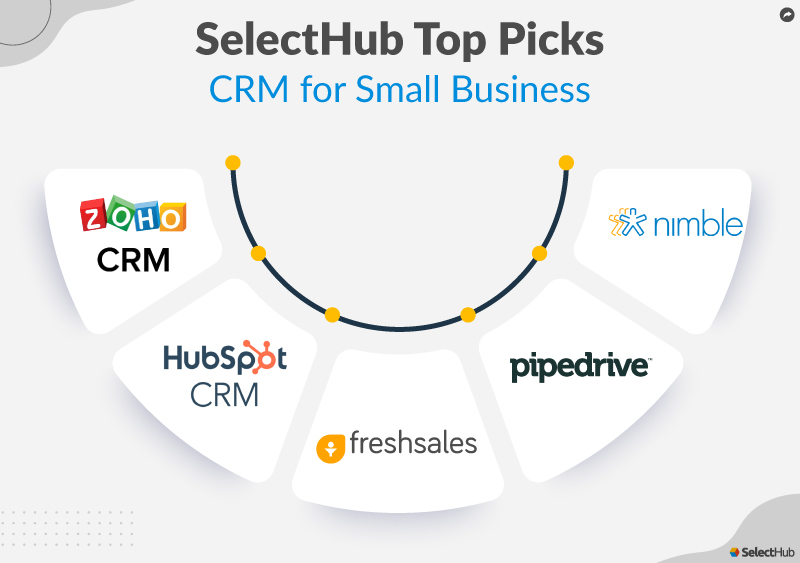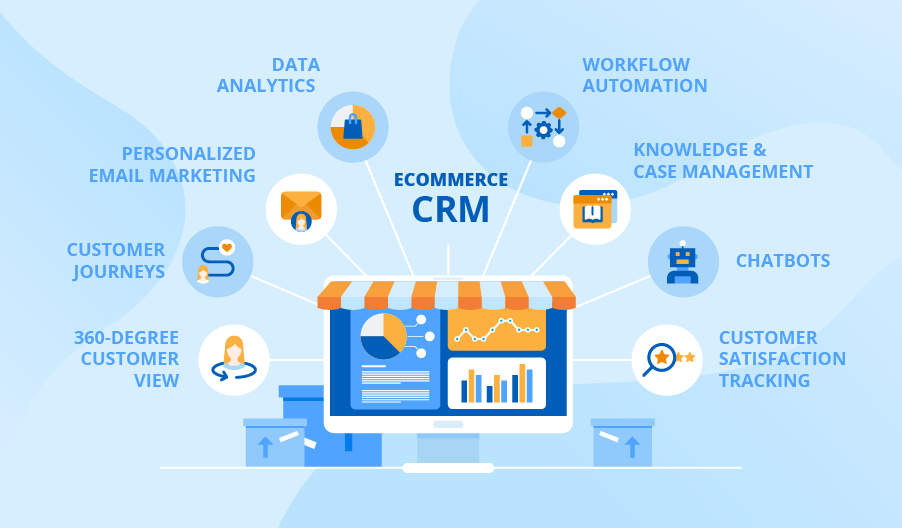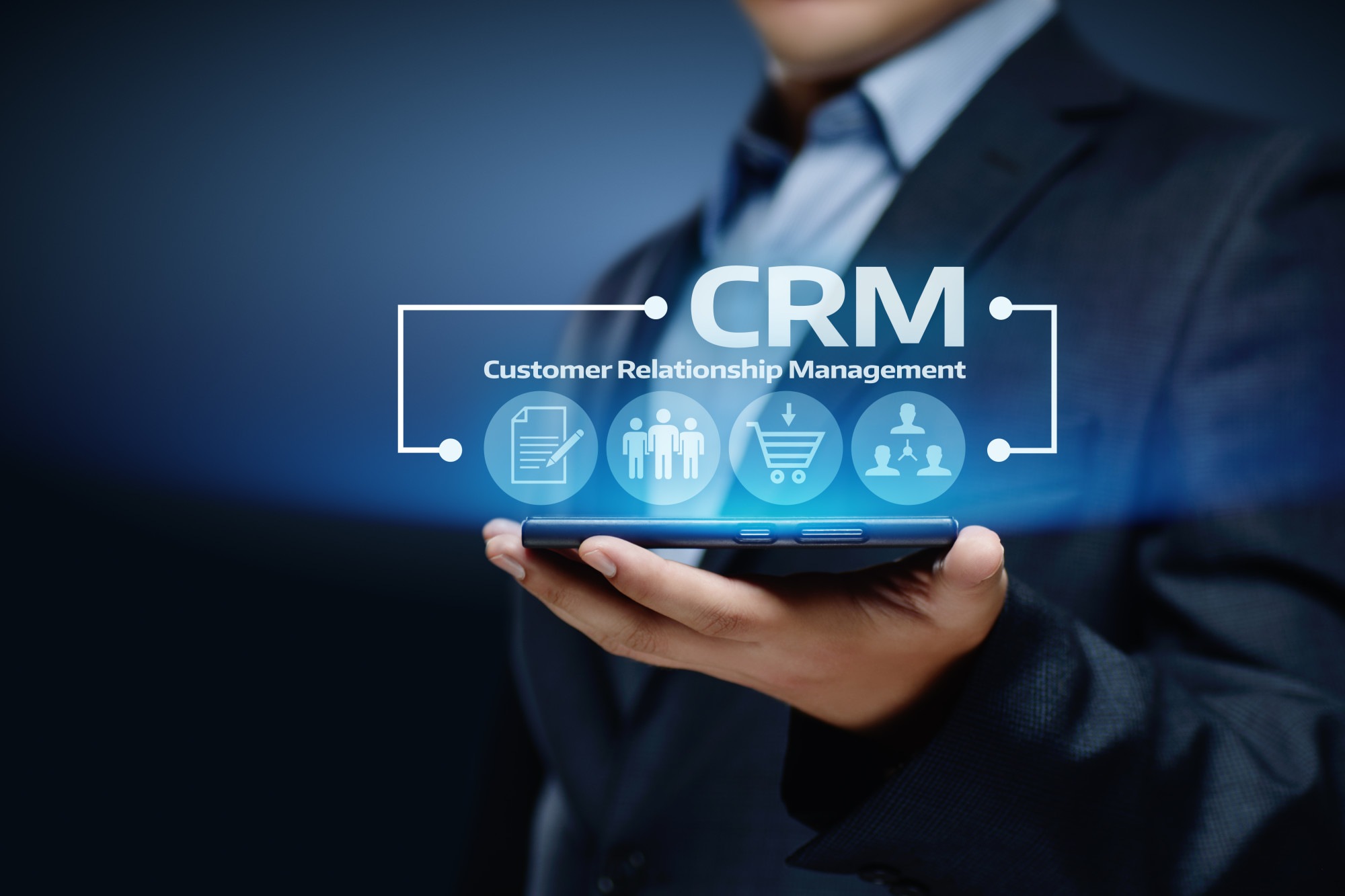Small Business CRM Checklist: Your Ultimate Guide to Choosing and Implementing the Right CRM

Small Business CRM Checklist: Your Ultimate Guide to Choosing and Implementing the Right CRM
Starting and running a small business is a wild ride. You’re juggling everything from product development and marketing to sales and customer service. Amidst the chaos, keeping track of all your leads, customers, and interactions can feel like herding cats. That’s where a Customer Relationship Management (CRM) system comes in. But with so many options, choosing the right CRM can feel overwhelming. Don’t worry, this small business CRM checklist will guide you through the process, ensuring you select and implement the perfect CRM to supercharge your business growth.
What is a CRM and Why Does Your Small Business Need One?
Before we dive into the checklist, let’s clarify what a CRM is and why it’s a game-changer for small businesses. A CRM is essentially a centralized database that stores all your customer information. It’s more than just a contact list; it’s a comprehensive system that allows you to:
- Manage Leads: Track potential customers from the moment they express interest.
- Organize Contacts: Store detailed information about each customer, including their purchase history, communication logs, and preferences.
- Improve Communication: Streamline your interactions with customers through email, phone, and other channels.
- Automate Tasks: Automate repetitive tasks like sending follow-up emails or scheduling appointments.
- Analyze Data: Gain insights into customer behavior and sales performance through reporting and analytics.
- Boost Sales: Close more deals by nurturing leads and providing personalized customer experiences.
- Enhance Customer Service: Provide faster and more efficient support.
In a nutshell, a CRM helps you build stronger relationships with your customers, leading to increased sales, improved customer satisfaction, and sustainable growth. For small businesses, a CRM can be the difference between surviving and thriving.
The Small Business CRM Checklist: Your Step-by-Step Guide
This checklist is designed to help you navigate the CRM selection and implementation process. Follow these steps to find the perfect CRM for your small business.
Step 1: Define Your Needs and Goals
Before you start comparing CRM systems, take some time to clarify your business needs and goals. What do you want to achieve with a CRM? What problems are you trying to solve? Here are some questions to consider:
- What are your primary business goals? (e.g., increase sales, improve customer retention, streamline marketing efforts)
- What are your biggest pain points in managing customer relationships? (e.g., disorganized contact information, difficulty tracking leads, lack of communication)
- What departments will be using the CRM? (e.g., sales, marketing, customer service)
- What are the key features you need? (e.g., contact management, lead tracking, sales automation, email marketing integration)
- What is your budget? (CRM pricing varies widely, so it’s important to set a budget.)
- How many users will need access to the CRM?
- Do you need any specific integrations with other tools you use? (e.g., accounting software, e-commerce platforms)
Answering these questions will help you create a clear picture of your CRM requirements and narrow down your options.
Step 2: Research CRM Options
Once you know what you need, it’s time to start researching different CRM systems. There’s a vast landscape of CRM providers, each offering a unique set of features and pricing plans. Here’s how to approach your research:
- Identify potential CRM providers. Some popular options for small businesses include:
- Zoho CRM: A comprehensive and affordable CRM with a wide range of features.
- HubSpot CRM: A free CRM with powerful features and excellent marketing automation capabilities.
- Salesforce Sales Cloud: A robust and scalable CRM suitable for businesses of all sizes, but can be more complex and expensive.
- Pipedrive: A sales-focused CRM with a user-friendly interface.
- Freshsales: A CRM with a focus on sales and customer service, offering features such as built-in phone and email.
- Read reviews and compare features. Websites like G2, Capterra, and TrustRadius offer user reviews and comparisons of different CRM systems. Pay close attention to features that align with your needs.
- Consider pricing and scalability. CRM pricing models vary. Some offer free plans with limited features, while others have tiered pricing based on the number of users or features. Make sure the pricing plan is affordable and scalable as your business grows.
- Check for integrations. Does the CRM integrate with the other tools you use, such as your email marketing platform, accounting software, and e-commerce platform?
- Look for ease of use. A CRM is only valuable if your team actually uses it. Choose a system with an intuitive interface and easy-to-learn features.
Don’t be afraid to spend time researching different options. This is an important decision, and taking the time to find the right CRM will pay off in the long run.
Step 3: Evaluate and Shortlist
After researching several CRM options, it’s time to narrow down your choices. Create a shortlist of 2-3 CRM systems that best fit your needs and budget. Evaluate each system based on the following criteria:
- Features: Does the CRM offer the features you need?
- Usability: Is the interface user-friendly and easy to navigate?
- Integrations: Does it integrate with your existing tools?
- Pricing: Is the pricing affordable and scalable?
- Customer Support: What kind of customer support is available? (e.g., phone, email, live chat)
- Reviews: What are other users saying about the CRM?
- Free Trial: Does the CRM offer a free trial? This allows you to test the system and see if it’s a good fit.
Create a spreadsheet or document to compare the different CRM systems side-by-side. This will make it easier to identify the pros and cons of each option.
Step 4: Test Drive the CRM
Once you’ve shortlisted a few CRM systems, take advantage of free trials or demos to test them out. This is your chance to get hands-on experience with the systems and see how they work in practice. Here’s what to do during the trial:
- Import sample data. Import a small amount of your contact information and other data to see how the CRM handles it.
- Explore the features. Try out the key features you need, such as contact management, lead tracking, and sales automation.
- Test the integrations. If the CRM integrates with other tools, test those integrations to make sure they work seamlessly.
- Get feedback from your team. Involve your team in the testing process and gather their feedback.
- Evaluate the user experience. Is the interface intuitive and easy to use? Is the system responsive and fast?
- Contact customer support. Test the customer support to see how responsive and helpful they are.
The trial period is crucial for determining if the CRM is a good fit for your business. Don’t rush this process. Take your time and thoroughly evaluate each system.
Step 5: Choose Your CRM
Based on your research, evaluation, and testing, it’s time to make a decision. Choose the CRM system that best meets your needs, budget, and team’s preferences. Consider the following factors when making your final decision:
- Overall fit: Does the CRM align with your business goals and processes?
- Features: Does it offer the features you need?
- Usability: Is it easy to use and navigate?
- Integrations: Does it integrate with your existing tools?
- Pricing: Is it affordable and scalable?
- Customer support: Is the customer support responsive and helpful?
- Team feedback: What did your team think of the CRM?
Once you’ve made your decision, notify your team and prepare for the implementation process.
Step 6: Implement the CRM
Implementing a CRM is more than just installing the software. It involves setting up the system, importing your data, training your team, and integrating it with other tools. Here’s a step-by-step guide to implementing your CRM:
- Plan your implementation. Create a detailed implementation plan that outlines the steps you need to take, the timeline, and the resources you’ll need.
- Set up the CRM. Configure the CRM to meet your specific needs. This may involve customizing fields, creating workflows, and setting up integrations.
- Import your data. Import your existing customer data into the CRM. Make sure the data is clean and accurate.
- Train your team. Provide training to your team on how to use the CRM. This may involve online tutorials, in-person training sessions, or a combination of both.
- Integrate with other tools. Integrate the CRM with your other tools, such as your email marketing platform, accounting software, and e-commerce platform.
- Test the system. Test the CRM thoroughly to make sure everything is working correctly.
- Go live. Once you’re confident that the system is working correctly, go live and start using the CRM.
- Provide ongoing support. Provide ongoing support to your team to help them use the CRM effectively.
Implementation can take some time, so be patient. The effort you put in during the implementation phase will pay off in the long run.
Step 7: Data Migration and Setup
Data migration is a crucial step in the implementation process. You’ll need to transfer your existing customer data into the new CRM. This process can be time-consuming, so plan accordingly. Here’s how to approach data migration:
- Clean your data. Before importing your data, clean it up to ensure accuracy. This involves removing duplicates, correcting errors, and standardizing formatting.
- Choose a data import method. Most CRMs offer a variety of data import methods, such as CSV files, spreadsheets, or direct integrations with other systems. Choose the method that works best for your data and your CRM.
- Map your data fields. When importing data, you’ll need to map your existing data fields to the corresponding fields in the CRM.
- Test your data import. Before importing all of your data, test the import process with a small sample of data to make sure everything is working correctly.
- Import your data. Once you’ve tested the import process, import the rest of your data.
- Verify your data. After importing your data, verify that it has been imported correctly. Check for any errors or missing data.
Proper data migration ensures that you have a complete and accurate view of your customer data in the CRM.
Step 8: Training and Adoption
Training is essential for ensuring that your team adopts and uses the CRM effectively. Invest in comprehensive training to help your team understand the CRM’s features and how to use them. Here’s how to approach training and adoption:
- Develop a training plan. Create a training plan that outlines the training objectives, content, and schedule.
- Choose a training method. Choose a training method that works best for your team, such as online tutorials, in-person training sessions, or a combination of both.
- Provide hands-on training. Provide hands-on training so your team can practice using the CRM.
- Create training materials. Create training materials, such as user guides, cheat sheets, and videos.
- Encourage adoption. Encourage your team to use the CRM by highlighting its benefits and providing ongoing support.
- Monitor adoption rates. Monitor adoption rates to ensure that your team is using the CRM effectively.
Successful training and adoption are key to maximizing the value of your CRM investment.
Step 9: Integration and Customization
Integrating your CRM with other tools and customizing it to meet your specific needs is crucial for maximizing its effectiveness. Here’s how to approach integration and customization:
- Identify integrations. Identify the tools you want to integrate with your CRM, such as your email marketing platform, accounting software, and e-commerce platform.
- Choose integration methods. Choose integration methods that work best for your tools, such as native integrations, third-party apps, or custom integrations.
- Configure integrations. Configure the integrations to ensure that data flows seamlessly between your CRM and other tools.
- Customize your CRM. Customize your CRM to meet your specific needs. This may involve creating custom fields, workflows, and reports.
- Test your integrations and customizations. Test your integrations and customizations to make sure everything is working correctly.
Proper integration and customization will help you streamline your business processes and improve your team’s productivity.
Step 10: Ongoing Maintenance and Optimization
CRM implementation isn’t a one-time event. It’s an ongoing process that requires maintenance and optimization. Here’s how to approach ongoing maintenance and optimization:
- Monitor your CRM usage. Monitor how your team is using the CRM to identify any areas for improvement.
- Provide ongoing support. Provide ongoing support to your team to help them use the CRM effectively.
- Update your CRM. Keep your CRM up-to-date with the latest features and security patches.
- Review your CRM settings. Review your CRM settings regularly to ensure they are still aligned with your business needs.
- Optimize your CRM. Optimize your CRM by making any necessary adjustments to improve its performance and effectiveness.
- Train new team members. Provide training to new team members on how to use the CRM.
Regular maintenance and optimization will ensure that your CRM continues to meet your business needs and deliver value.
Key Features to Look For in a Small Business CRM
While the specific features you need will vary depending on your business, here are some key features to look for in a CRM system:
- Contact Management: The ability to store and manage contact information, including names, phone numbers, email addresses, and other relevant details.
- Lead Management: Features for tracking leads, qualifying them, and nurturing them through the sales pipeline.
- Sales Automation: Automation features, such as automated email follow-ups, task reminders, and workflow automation.
- Sales Reporting and Analytics: Reports and dashboards that provide insights into sales performance, lead conversion rates, and other key metrics.
- Email Marketing Integration: Integration with your email marketing platform to streamline your marketing efforts.
- Task Management: The ability to create and manage tasks, assign them to team members, and track their progress.
- Mobile Access: Mobile apps or a mobile-friendly interface that allows you to access your CRM data on the go.
- Integration with other tools: Integration with other tools you use, such as your email, calendar, and accounting software.
- Customer Service Features: Features for managing customer support tickets, tracking customer issues, and providing customer service.
Prioritizing these key features will set you on the path to finding a CRM that truly empowers your small business.
Common CRM Mistakes to Avoid
Implementing a CRM can be tricky, and it’s easy to make mistakes along the way. Here are some common mistakes to avoid:
- Choosing a CRM that is too complex. Overly complex CRMs can be difficult to learn and use, leading to low adoption rates. Start with a simpler CRM and scale up as needed.
- Not involving your team in the decision-making process. Your team will be the ones using the CRM, so it’s important to get their input and feedback.
- Not providing adequate training. Without proper training, your team won’t be able to use the CRM effectively.
- Not cleaning your data before importing it. Dirty data can lead to inaccurate reports and wasted time.
- Not integrating the CRM with other tools. Integration is key to streamlining your business processes.
- Not monitoring your CRM usage. Monitor how your team is using the CRM to identify any areas for improvement.
- Not providing ongoing support. Provide ongoing support to your team to help them use the CRM effectively.
By avoiding these common mistakes, you can increase your chances of a successful CRM implementation.
The Benefits of a CRM for Small Businesses
Implementing a CRM offers a wealth of benefits for small businesses. Here are some of the key advantages:
- Improved Customer Relationships: CRM systems help you build stronger relationships with your customers by providing a centralized view of all customer interactions.
- Increased Sales: By streamlining your sales processes and providing insights into customer behavior, CRM systems can help you close more deals.
- Enhanced Customer Service: CRM systems help you provide faster and more efficient customer service by providing a centralized view of customer issues and interactions.
- Increased Efficiency: CRM systems automate repetitive tasks, freeing up your team to focus on more important activities.
- Improved Data Analysis: CRM systems provide reports and dashboards that allow you to track your sales performance, lead conversion rates, and other key metrics.
- Better Team Collaboration: CRM systems facilitate better team collaboration by providing a centralized platform for sharing information and tracking progress.
- Reduced Costs: By streamlining your processes and improving efficiency, CRM systems can help you reduce costs.
- Scalability: CRM systems are scalable, so you can easily add users and features as your business grows.
These benefits can have a significant impact on your bottom line and help you achieve your business goals.
Making the Most of Your CRM: Tips for Success
Once you’ve implemented your CRM, there are several things you can do to ensure its success. Here are some tips for making the most of your CRM:
- Use the CRM consistently. Make sure your team uses the CRM consistently to track all customer interactions and activities.
- Keep your data up-to-date. Regularly update your customer data to ensure its accuracy.
- Use the CRM to its full potential. Explore all of the features the CRM has to offer and use them to their full potential.
- Train your team regularly. Provide ongoing training to your team to help them stay up-to-date on the CRM’s features and best practices.
- Monitor your results. Track your sales performance, lead conversion rates, and other key metrics to see how the CRM is helping you achieve your goals.
- Get feedback from your team. Ask your team for feedback on the CRM and make any necessary adjustments.
- Stay up-to-date on the latest CRM trends. Stay up-to-date on the latest CRM trends and best practices to ensure you’re getting the most out of your CRM.
By following these tips, you can maximize the value of your CRM investment and achieve your business goals.
Conclusion: Embrace the Power of CRM for Your Small Business
Choosing and implementing a CRM system is a significant step for any small business. By following this checklist and taking the time to define your needs, research options, and implement the system effectively, you can unlock the power of CRM to drive growth, improve customer relationships, and streamline your operations. Don’t be afraid to invest in a CRM – it’s an investment in your future success.
Remember, the right CRM is not just a piece of software; it’s a strategic tool that empowers your team, enhances customer experiences, and ultimately, fuels your business’s growth. Take the time to find the perfect fit, and you’ll be well on your way to achieving your business goals.




